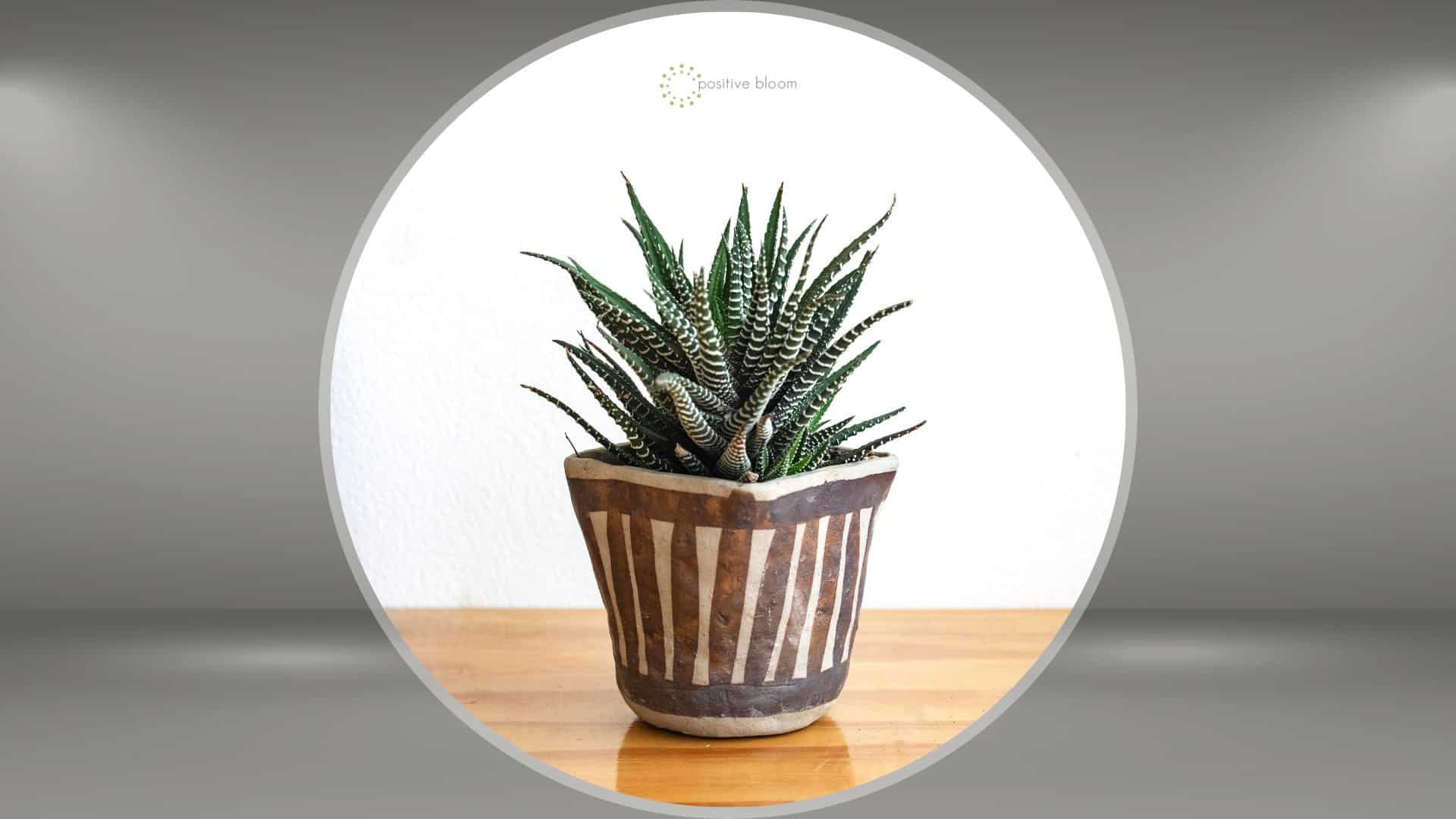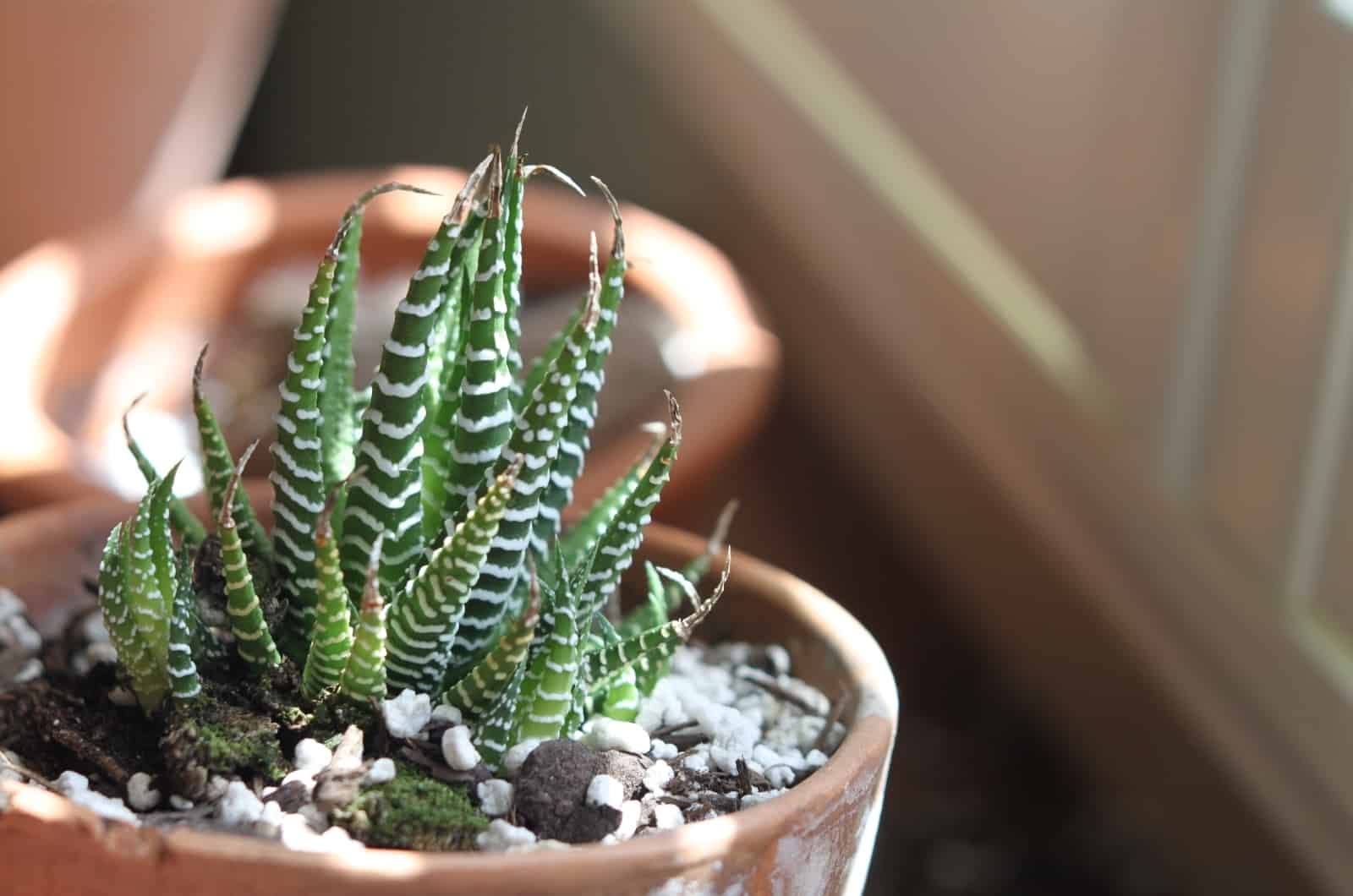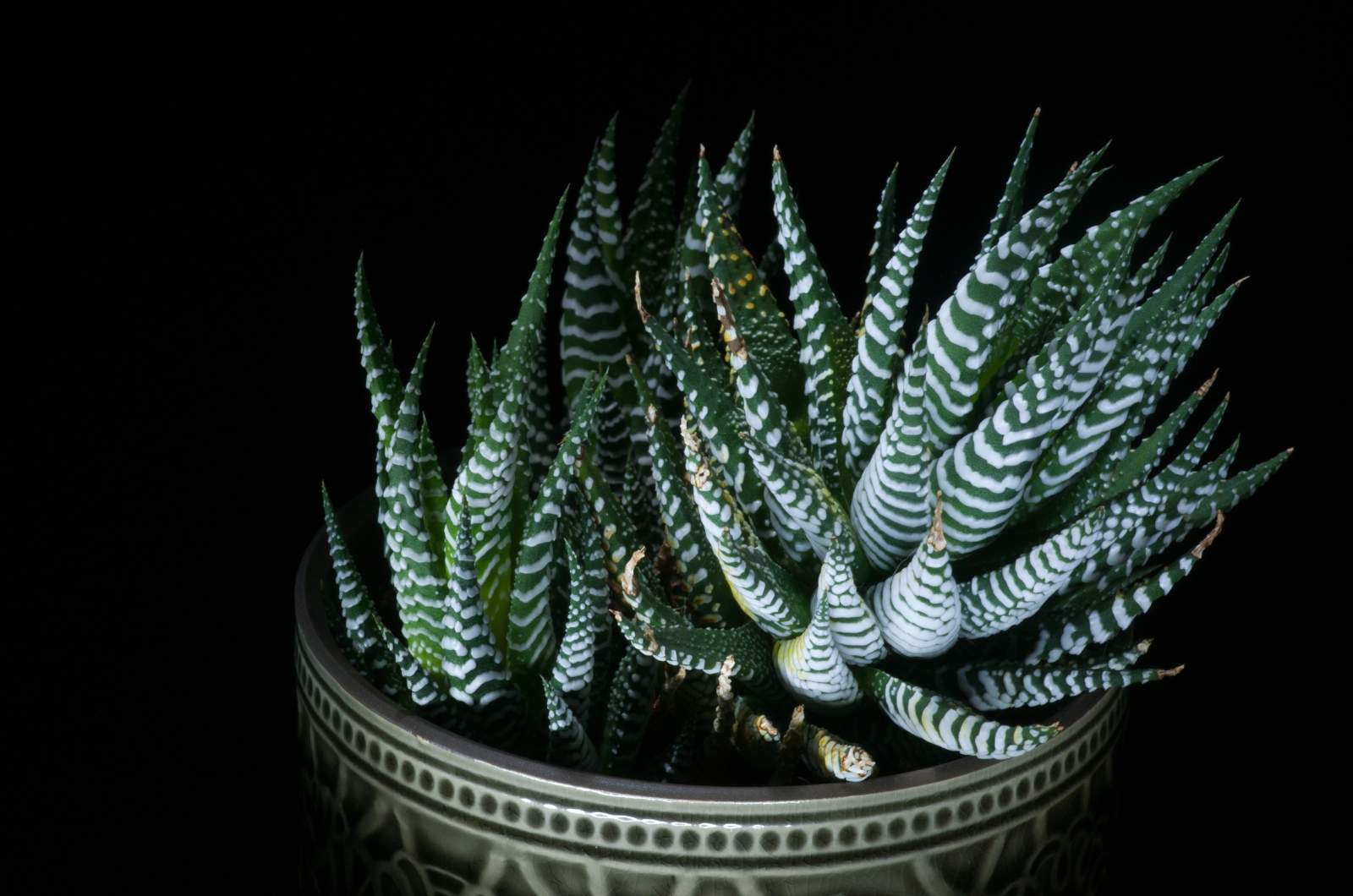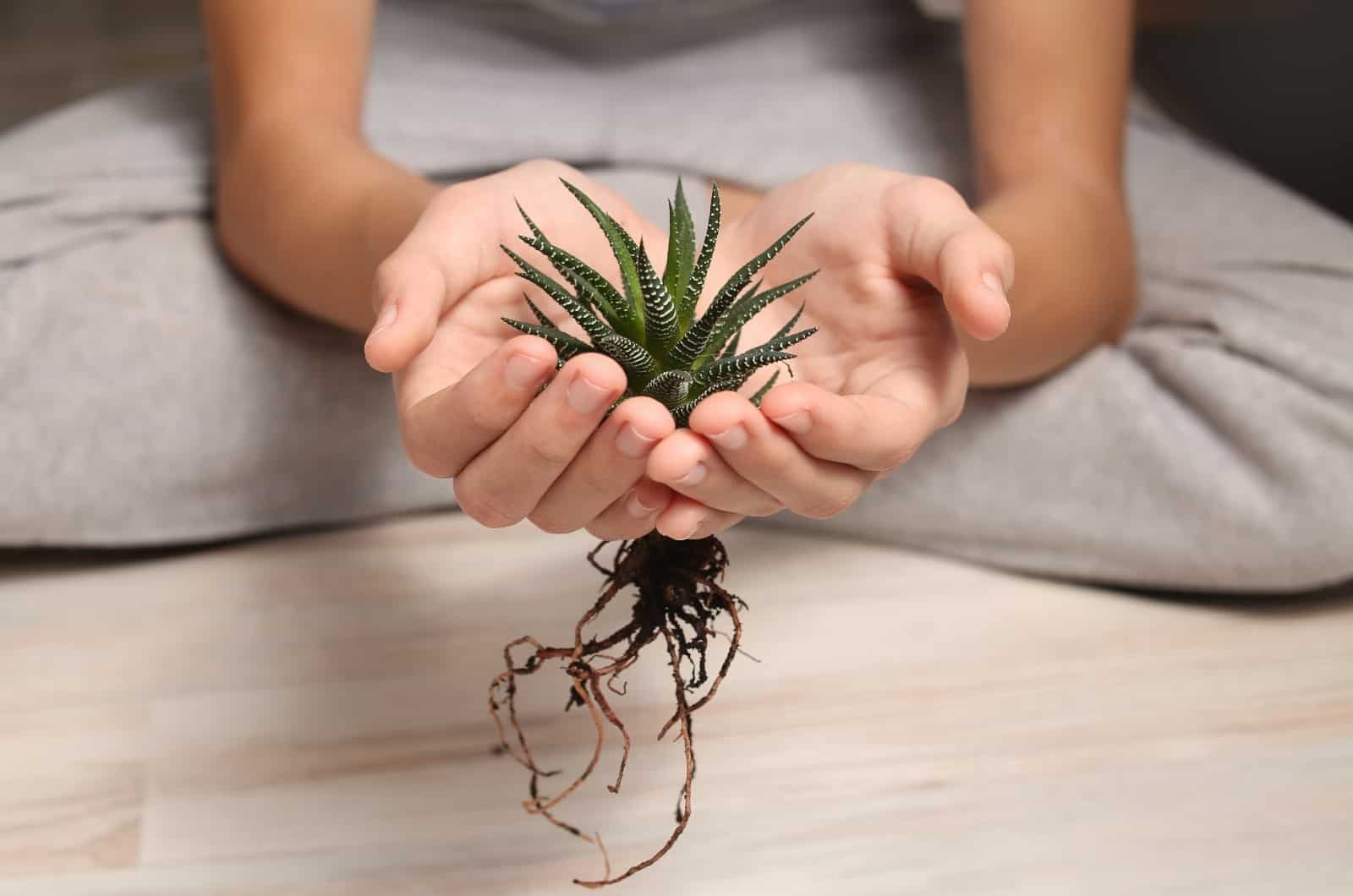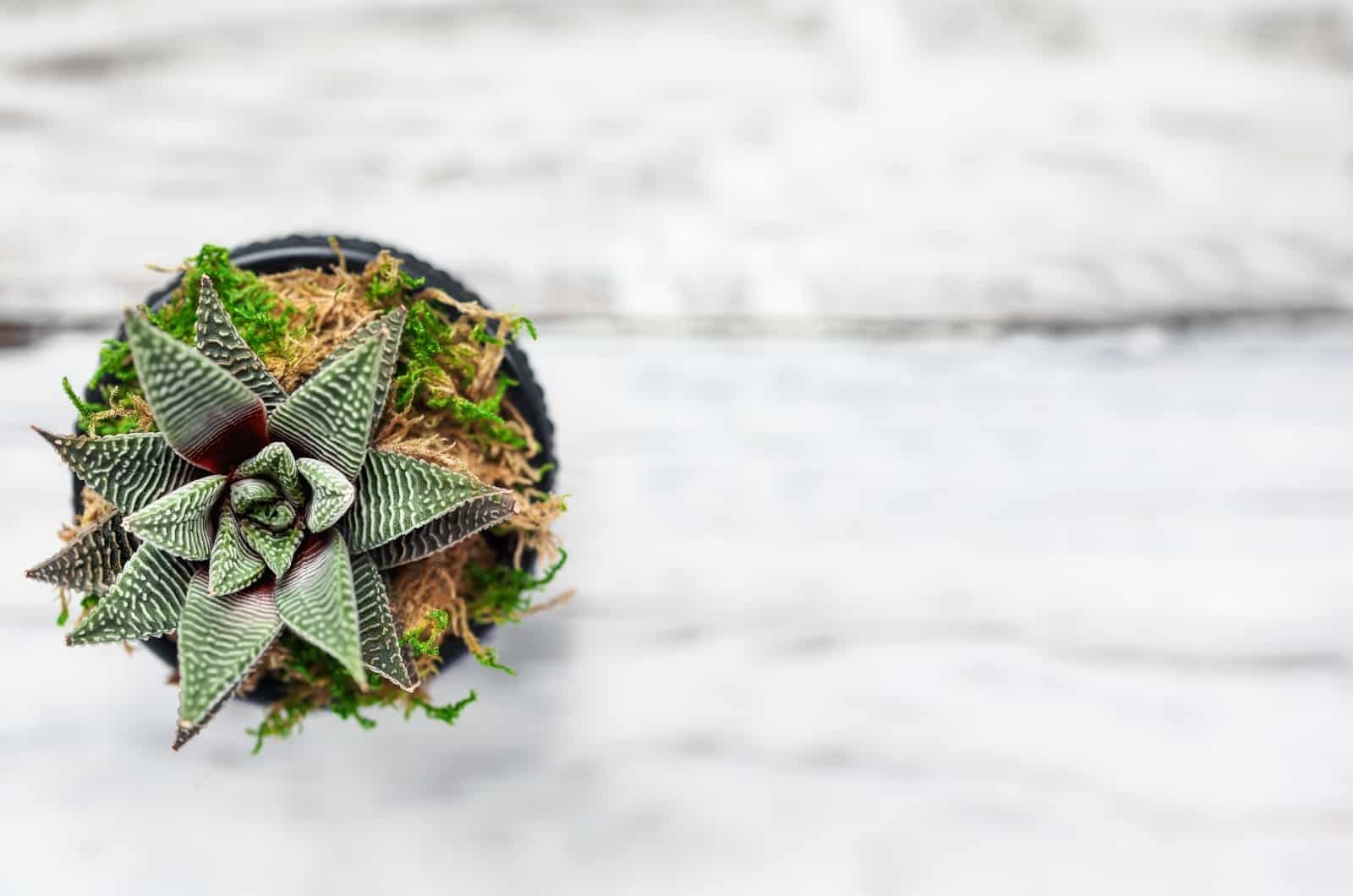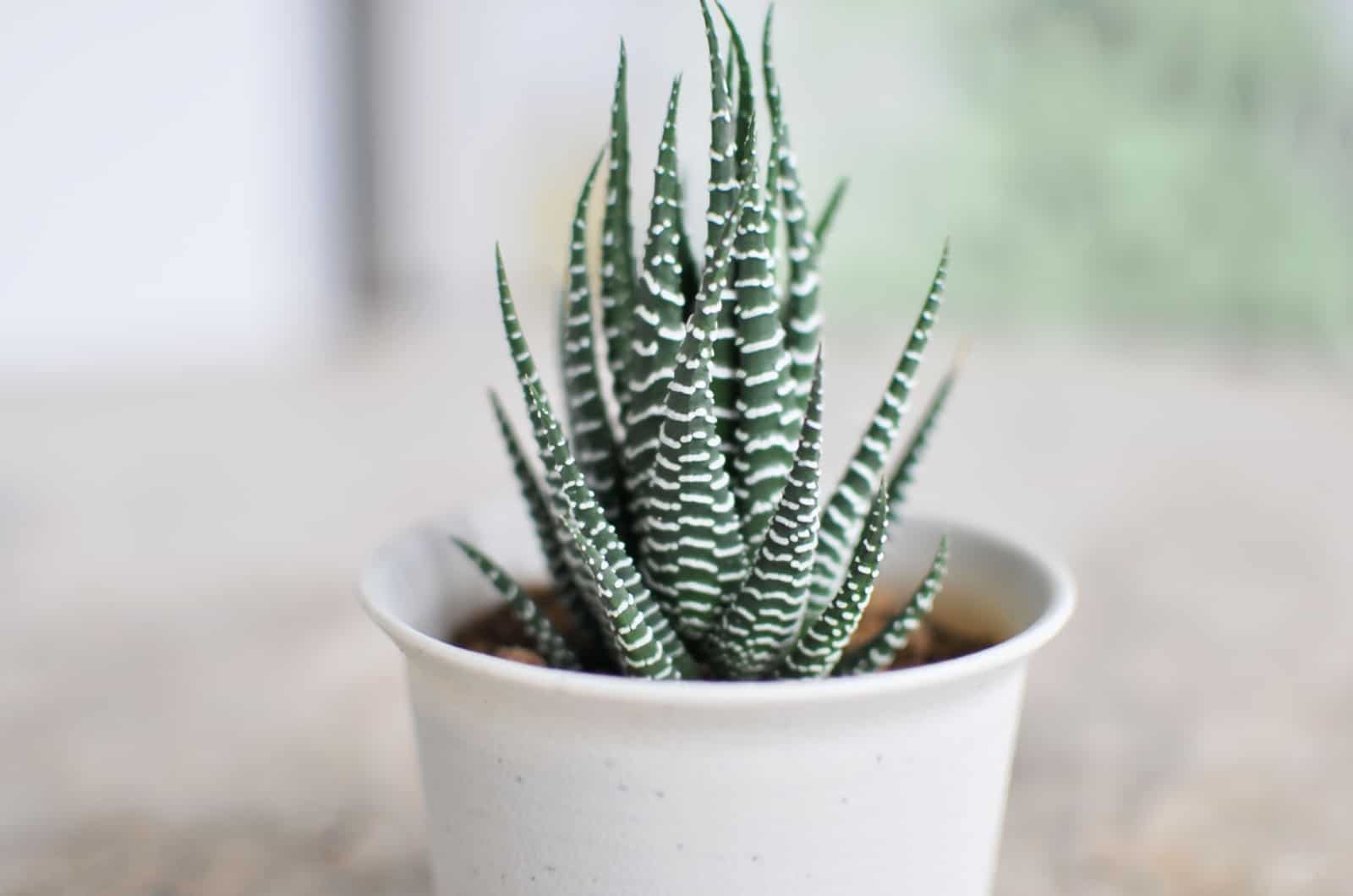I have always been interested in plants with weird names!
In this article, I’ll tell you all about the Zebra succulent plant. Having the term zebra in the name can mean only one thing, stripes.
Of course, black and white stripes can’t really be the only leaf colors, but you get the point.
This is a succulent plant, which means it doesn’t need much to thrive. Therefore, if you are a beginner gardener, growing a zebra succulent is a great idea.
Before I move on, here’s some basic info about the zebra plant:
[table id=580 /]
Let’s get started!
What Is The Zebra Succulent Plant?
Let’s first discuss the botanical background of the plant, as that’s the most confusing part.
Today, the Zebra succulent is referred to as Haworthiopsis fasciata, and belongs to the Haworthiopsis genus.
But the plant had to come a long way before it got (I hope) its permanent classification. A long, long time ago in the 18th century, the plant was part of the Aloe genus.
One century later, the plant was reclassified into the Haworthia genus and became one of the most popular Haworthia plants.
In 2013, the plant was reclassified again, but this time to the Haworthiopsis genus. The first thing to understand is that the Haworthia and Haworthiopsis aren’t the same genera.
I know the terms are very similar. Still, the suffix Opsis in the name Haworthiopsis comes from Greek, which refers to the similarity of this genus to the Haworthia genus.
Let’s find out more about the appearance of the Zebra plant.
Appearance
The Zebra succulent plant has pointy leaves adorned with stripes (zebra stripes), which are actually white, wart-like tubercles.
The ornamental leaves develop from the center in the typical succulent manner (rosettes), but curve slightly more inwards.
The Zebra plant is ideal for indoor cultivation because it rarely grows taller than 7 inches. The plant produces a single slender stem covered in tubular, white blossoms when it is in bloom.
It’s often mistaken for the Haworthiopsis attenuata (formerly Haworthia attenuata), and both plants even bear the same nickname – Zebra plants.
The attenuata plant has stripes on the undersides of the leaves, unlike the fasciata, whose stripes are situated on the leaf surface.
Growth Rate
Many growers are interested in the lifespan of the Zebra succulent plant. Well, these are one of the slowest-growing plants ever, but may live up to 50 years.
Of course, this is only possible if all the growing requirements of the H.fasciata are met.
Luckily, the zebra plant isn’t fussy, and it will survive a little bit of neglect.
How To Care For The Zebra Plant
How do you make Zebra plants happy?
The H. fasciata succulent plant requires bright indirect light, moderate temperatures, low humidity, and a loose and well-aerated growing medium.
Let’s get into details!
Light Requirements
Zebra plants can tolerate different light conditions when grown as indoor plants.
However, direct sunlight isn’t the best light level the plant can receive; a little direct sun in the morning won’t hurt your zebra plant, but intense afternoon sun surely will.
Find a spot for this succulent where it can get a lot of bright light, but make sure the light is indirect so that intense sun rays don’t reach the foliage.
You should also avoid placing your Haworthia fasciata in low light conditions as it can get lanky and pale. Partial shade works well during the hot summer months because too much light can scorch the foliage and also enhance the water evaporation rate, which results in dehydration.
You can put your Zebra plant near a south-facing window, but place sheer curtains to ensure it gets partial sun.
Temperature Requirements
Unfortunately, Zebra plants aren’t known for their resistance to cold temperatures. This indoor succulent plant thrives in temperatures ranging from 65 to 85 degrees Fahrenheit.
If you live in a warm climate, i.e., USDA hardiness zones 10 and 11, your fasciata plant will grow perfectly well outdoors all year round.
Unfortunately, you will need to take it indoors as soon as cold weather approaches if you live in a colder climate.
Avoid placing these succulents close to heaters and air conditioners because these devices cause frequent and abrupt temperature changes that could stress this lovely Haworthiopsis.
Humidity Requirements
There’s one thing I especially like about Haworthiopsis fasciata plants; they grow well in literally all humidity conditions when grown as houseplants.
So, if you have a spot in your kitchen or bathroom that needs a plant, the H.fasciata is here to help.
Humidity levels in these areas are pretty high, but the zebra plant seems to love it.
If you have areas in your household with really low humidity, just group your plants; Echeverias, Crassulas, String of pearls, and Air plants will look amazing if placed close together, and will raise surrounding humidity.
Many growers debate succulent needs for humidity, but for Haworthiopsis plants, the discussion isn’t necessary.
Ideal Soil Type
All succulents need free-draining, porous, and fertile soil mixes. One of the major reasons for such requirements is the susceptibility to overwatering.
So, Zebra plants need sandy soil types with a lot of air pockets for the roots to breathe.
If you don’t want to make your own potting mix, high-quality soil mixes for succulents and cacti are widely available.
If you want to try your hand and make your own substrate, then amend some free-draining potting soil with perlite, pumice, or similar well-draining ingredients.
Watering Schedule
When it comes to succulents, the trickiest thing is how much and how often to water them. The first thing to consider is the frequency.
Zebra plants don’t have high watering needs, and overwatering can be lethal. It’s not actually the water that kills the plants, but rather root rot disease, which is a consequence of too much water in the soil.
The best recipe for the watering schedule for these plants is to irrigate when the soil has dried out.
If unsure, remember that it’s better to underwater the Zebra plant than to waterlog its soil. Generally speaking, these plants will need about 2 waterings per month.
But bear in mind that high temperatures during summer affect the moisture content in the soil, so you might need to water a little bit more.
On the other hand, Zebra plants watering needs are very low during the winter due to the slow water evaporation rate. Your plant is even more susceptible to overwatering, so don’t rush to irrigate it.
Fertilizing Schedule
The Fasciata plant has a really slow growth rate, which results in low fertilizing needs. Feed the plant with a weak solution twice per growing season to avoid overfertilization and chemical burns of the Zebra plant roots.
There is excellent plant food specifically made for succulent plants widely available that will fulfill the needs of your Haworthiopsis.
If you want to preserve the dark green color of the leaves and this plant’s health in general, you need to cut back on feeding during the winter months.
Repotting
The slow growth rate of the Zebra plant affects one more thing, repotting. I recommend repotting your plant every 2 to 3 years as it will most likely need that much time to outgrow its pot.
However, the major reason we repot Haworthias is to give them fresh growing medium, i.e., new nutrients.
Regarding container type and size, I recommend using clay pots with drainage holes in the bottom. These pots are decorative and will hold moisture for a long time. Additionally, they’ll help you avoid overwatering because of the drainage holes.
Zebra plants start growing in early spring, so it would be best if you could repot them then. This will give them enough time to recover from transplant shock and a fresh growing medium.
How To Propagate The Haworthia Fasciata
If you want more Zebra plants, but you don’t want to spend money, propagation is the way to do it. Luckily, these plants are very easily propagated, and I’m sure you won’t have issues even if you are a beginner.
The two best ways to propagate the Haworthia fasciata are offsets and leaf cuttings.
I’ll show you both ways so that you can decide which one suits you better.
Let’s propagate!
Propagating Zebra Plants Through Offsets
As soon as you notice your adult Zebra plant has produced offsets, you can start propagating.
All you need to do is remove the offsets that are closest to the mother plant.
Make sure the offsets have enough roots, as that guarantees successful multiplication.
A knife, pair of scissors, or pruners can all be used for cutting off the offsets. Pay attention to two things; sanitation and sharpness. Blunt and unsterilized tools can damage your Zebra plant by either tearing it apart or contaminating it.
Prepare a nursery pot and fill it with a growing medium suitable for Zebra plants. Give the offsets plenty of bright indirect light and pay attention to watering.
How To Propagate The Zebra Haworthia Through Leaf Cuttings
Another excellent method for Zebra Haworthia propagation is using leaf cuttings. Again prepare sharp and clean cutting tools, as well as a rooting hormone, nursery pot, and adequate growing medium.
The essential thing regarding leaf cutting is to allow it to heal (callous) for a few days.
Plant the Zebra plant leaf cutting in a fresh substrate, then put the nursery pot in a sunny area. Water accordingly, wait a few weeks, and gently pull on the cutting; if it resists a little bit, the roots are strong enough.
Your new Zebra plant is now ready for transplanting!
Common Issues With The Zebra Haworthia
Zebra plants typically don’t deal with many problems during their lives, but pests and diseases may occur.
Also, if your Zebra succulent isn’t happy about the conditions, it will display discoloration or deformation in its appearance.
Let’s find out more!
Pests
The Haworthiopsis may be infested by aphids, spider mites, and mealybugs. These are common houseplant pests, so if you grow this succulent indoors, it’s at risk of infestation.
If you see them swaggering over your precious plant, isolate it to prevent the infestation spreading.
To get rid of these nuisances, first handpick as many as you can to reduce the population. Then, treat your Zebra Haworthia with some natural pesticides such as neem oil, insecticidal soap, or rubbing alcohol.
Diseases
Houseplants frequently suffer from root rot disease, and the H.fasciata isn’t an exception. As mentioned, this succulent is prone to overwatering.
Waterlogged soil draws in fungus, which leads to root rot.
Mushy soil, discolored leaves, and wilting are all indicators of root rot in Zebra plants.
If you notice any of these symptoms, your fasciata needs to come out of its pot for a root inspection.
Mushy and discolored fasciata roots indicate root rot. If all the roots are like this, there’s no way to save your succulent.
If some of the roots still look healthy, you can start reviving your fasciata plant.
Remove any unhealthy components below the soil line using clean and sharp pruners. Spray the healthy Zebra Haworthia roots with a fungicide to eliminate any live fungal spores.
The final step is to repot your H.fasciata in a new container filled with fresh growing medium.
Leaf Discoloration And Deformation
One of the major problems fasciata growers come across is red leaves, which is mainly caused by too much direct light.
Luckily, you can fix this issue by moving your fasciata to a spot with partial shade. Your plant will regain its original color in a few weeks.
If the foliage turns yellow, your Haworthia is either overwatered or the leaves are receiving too much direct sunlight.
Wrinkling and wilting are predominantly caused by low soil moisture content, i.e., underwatering.
Inspect your Haworthia closely; if it displays any signs of root rot, you must remove it from the pot to check the root system.
Check/fix the light conditions and make sure your fasciata plant doesn’t grow in temperatures that are too low.
FAQs
Is the Zebra Haworthia Rare?
The Zebra Haworthia, aka Haworthiopsis fasciata, is a pretty rare plant. It has a unique appearance and low care requirements, making it more desirable and thus rarer. If you find a fasciata plant, purchase it and don’t forget to propagate it using offsets or leaf cuttings!
Are zebra succulents poisonous?
The Zebra succulent plant contains no toxic substances and is completely safe for humans and pets. Of course, if your child or pet ingests large quantities, consult your doctor.
What is a plant that looks like a zebra?
There are two plants that resemble zebras: the Haworthiopsis fasciata and Aphelandra squarrosa. Both plants have the nickname “Zebra plant” and are grown as houseplants.
The fasciata plant is succulent and belongs to the Asphodelaceae family. In contrast, the squarrosa plant belongs to the Acanthaceae family and is an evergreen shrub.
Wrapping Up
The Zebra succulent plant is one of the most attractive houseplants you can get. It’s small, compact, and fairly drought-tolerant, making it a great plant for beginners. Its dark green leaves, white stripes, and white inflorescences make the plant very desirable.
Additionally, it’s not too fussy about light, temperature, humidity, soil mix, and food. The essential thing is to create the correct watering schedule for your fasciata plant.
There’s only one drawback of this Haworthiopsis plant; it may be hard to find, so if you want to add it to your plant collection, you’ll need to make an effort to find it.
Until next time!
Like this post? Share or pin it for later!

